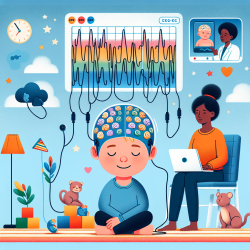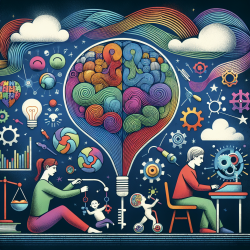Introduction
Autism Spectrum Disorder (ASD) is a complex neurodevelopmental condition characterized by challenges in social interaction, communication, and repetitive behaviors. As practitioners, we constantly seek evidence-based approaches to enhance therapeutic outcomes for children with ASD. A recent study, "QEEG Spectral and Coherence Assessment of Autistic Children in Three Different Experimental Conditions," provides valuable insights into the brain's electrical activity in children with autism, offering potential pathways for refining therapeutic strategies.
Understanding QEEG and Its Implications
Quantitative Electroencephalography (QEEG) is a powerful tool that measures electrical patterns at the surface of the scalp, reflecting cortical activity. The study in question utilized QEEG to compare autistic children with controls across three conditions: a basal resting state, watching a cartoon with audio, and watching the same cartoon without audio. The findings revealed significant differences in brain activity between these conditions, particularly in the right hemisphere, suggesting impairments in sensory integration.
Key Findings
- Significant reductions in power spectral density (PSD) were observed in the central and posterior regions of the brain for specific frequency bands, notably delta, theta, sigma, and beta.
- When comparing the conditions with and without audio, autistic children exhibited lower coherence values in the right hemisphere, indicating potential challenges in visual-auditory sensory integration.
- The study highlights the importance of considering sensory processing differences in therapeutic settings, especially in environments where auditory stimuli are prevalent.
Practical Applications for Practitioners
For practitioners working with children with ASD, these findings underscore the need to tailor therapeutic approaches to address sensory integration challenges. Here are some practical applications:
- Incorporate Multisensory Interventions: Design therapy sessions that integrate visual and auditory stimuli in a controlled manner to gradually enhance sensory processing capabilities.
- Utilize Biofeedback Techniques: Consider using biofeedback to monitor and improve brainwave patterns, focusing on enhancing coherence and reducing excessive slow-wave activity.
- Customize Environmental Settings: Adjust therapy environments to minimize overwhelming sensory inputs, particularly auditory distractions, to create a more conducive setting for learning and interaction.
Encouraging Further Research
While this study provides a foundational understanding of brain activity in children with autism, further research is essential to explore the nuances of sensory integration and its impact on therapeutic outcomes. Practitioners are encouraged to engage in collaborative research efforts to validate and expand upon these findings, potentially leading to more personalized and effective interventions.
To read the original research paper, please follow this link: QEEG Spectral and Coherence Assessment of Autistic Children in Three Different Experimental Conditions.










